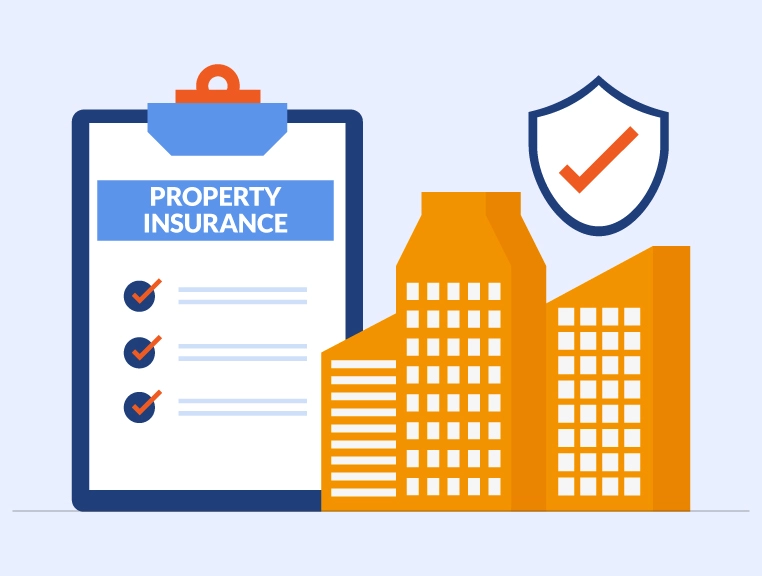The insurance industry uses the terms like risks, perils, and hazards to differentiate between various conditions of insurance. The possibility of loss is denoted by the term ‘risk’, whereas the term ‘peril’ denotes the cause of the loss. The term ‘hazard’ denoted a condition that increases the possibility of loss. Physical hazards in fire insurance mean any physical condition that increases the possibility of a loss. These physical hazards can include any material, structural, or operational features of the business. Such physical hazards create or increase the opportunity for injury or damage caused due to fire.
The insurance company needs to have a detailed knowledge of the physical hazard while underwriting the policy and deciding whether to accept the risk. This helps them to decide the insurance terms, rates, nature, premium, and other conditions for the fire insurance policy. The physical hazards in the fire insurance indicate the dangers of the subject of the insurance. The inspection of the risk identified such hazards.
The following are the physical hazards in fire insurance:
Nature of the construction material:
Here the physical hazards are the material used in construction. The nature of the material, whether they are combustible or non-combustible plays an important role here.
The lighting and the heating system on the premises:
The system of lighting and heating on the premises can be a physical hazard. The wire and the cable material of the building can cause a fire. It is essential that these elements are in good shape and not shabby.
Unclear premises:
Fire can spread easily if found rubbish everywhere. Such rubbishes can be of a hazardous nature as far as considered fire insurance.
Smoking cigarettes on the premises:
Smoking is the enemy of inflammable materials. Especially in factories, where there is combustible material present, indiscriminate smoking becomes a physical hazard.
Read More: How to file claims under a Fire Insurance policy in India?
Nature of business occupation:
For any business involved in the usage of petroleum, kerosene, or chemicals, the probability of the hazard increases. Therefore, considers such materials as physical hazards in fire insurance.
Nature of the adjoining premises:
A fire can spread quickly from the adjoining premises to the premises of the insured. Hence consider the nature, construction, and occupation of such adjoining premises as a physical hazard.
Case Study:
‘Rajdeep Clothing Ltd’ factory was a well-known name in the cloth manufacturing industry in Kolkata. Being in the business for two decades, the factory involved itself in manufacturing men’s apparel like shirts and trousers.
Since the factory was in business for a long time, the owners of the factory had taken a fire insurance policy to protect them. In April 2014, a fire broke out in the factory. It engulfed the entire shipment of material, exported to Hyderabad. The company lost two lakh rupees due to the fire breakout.
To safeguard against physical hazards in fire insurance, it is recommended to have functioning fire detection and prevention systems in place, regularly inspect and maintain electrical and heating systems, have proper storage and handling of flammable materials, and implement fire safety training for employees or residents.
Read More: Which Expenses Are Covered by The Fire Policy?
The owners contacted their insurers immediately. The insurance company sent a surveyor to investigate the scenario. Upon investigation, the surveyor found out that the fire was caused due to a short circuit in one of the electronic boards situated in the production room. The wiring material was of sub-standard quality and hence gave rise to a short-circuit scenario.
Since the cause of the fire was a physical hazard like faulty wiring material, the insurers agreed to settle the claim. The fire insurance company settled the entire loss of two lakh rupees successfully. Thus, the fire insurance policy secured by ‘Rajdeep Clothing Ltd’, helped the company to mitigate the amount lost.
About The Author
Shivani
MBA Insurance and Risk
She has a passion for property insurance and a wealth of experience in the field, Shivani has been a valuable contributor to SecureNow for the past six years. As a seasoned writer, they specialize in crafting insightful articles and engaging blogs that educate and inform readers about the intricacies of property insurance. She brings a unique blend of expertise and practical knowledge to their writing, drawing from her extensive background in the insurance industry. Having worked in various capacities within the sector, she deeply understands the challenges and opportunities facing property owners and insurers alike.




